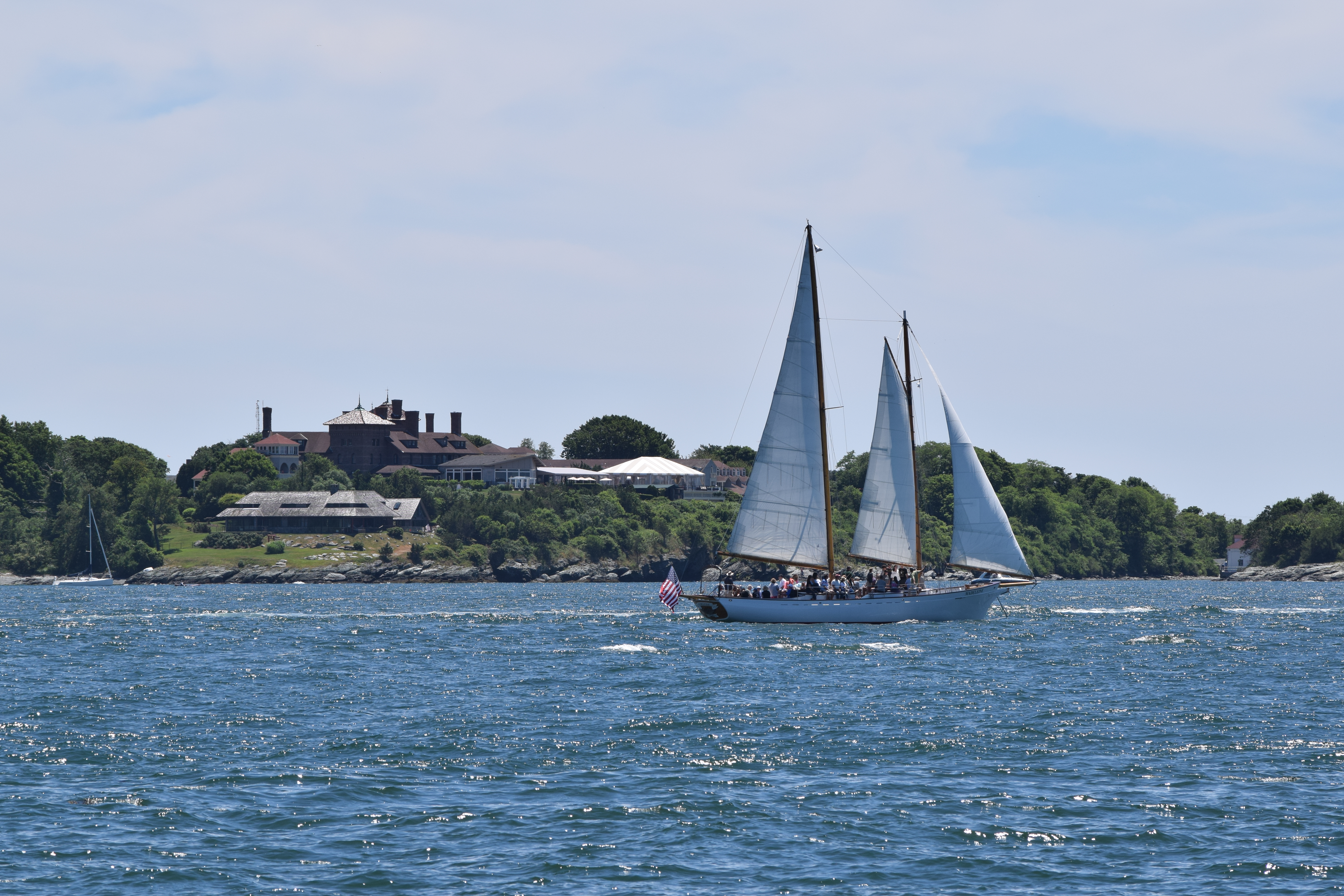Photo by Anna Meassick | Sailing is a common practice in the bay that poses as a stressor and effects the bay.
The University of Rhode Island is collaborating with other institutions across the state of Rhode Island to monitor the ecological health of the Narragansett Bay.
URI is the leading institution for the project, which is currently in its second year. Dr. Lewis Rothstein, an oceanography professor, is one of the researchers leading the project for URI. Rothstein said the purpose of the project is to examine the health of the bay from a multidisciplinary approach.
“We’re looking to understand how the bay changes under various stressors, both anthropogenic, or man-made and naturally varying, like the seasons,” Rothstein said.
The project will allow researchers to rebuild an observatory to study the changing conditions of the Narragansett Bay. Additionally, all the data collected will be compiled on a website that will show the results and historical data.
“We’re augmenting the observatory that already exists in Narragansett Bay, with significantly new equipment,” Rothstein said. “We have a computer modeling component to try and understand the processes essential to the ecology of Narragansett Bay, as well as an engineering component to design new sensors that can be less expensive and can do as good a job or better a job than the more expensive sensors that we’re putting in the bay today.”
The project will use observational tools that will allow researchers to measure the change in water conditions, such as temperature, salinity and water velocity. With these tools, the team will also be able to examine phytoplankton and zooplankton species in the bay and the various processes that occur in the lower trophic levels of the bay, where such species live.
The impact on species in lower-trophic levels of the bay will partially be done through examining changes in pH and nutrient levels in the water.
The sensors will be stationed in three main parts of Narragansett Bay. If the University is awarded additional grants in the upcoming years, they may be able to acquire additional sensors. For now, the sensors will be put in places that allow researchers to develop a holistic idea of the health of the bay.
“We have developed our sensors to look at the choke points in the bay,” Rothstein said. “We have a station in East Passage at the lighthouse, right at the entrance to the bay. We have a station off of Fox Island, which is at the head of the West Passage, to see what is coming out of the bay. We have a process-oriented station in Greenwich Bay, the eastern part, to look at the ethnic fluxes coming out of the sediments and into the water column.”
In addition to transmitting data back to researchers, the sensors used in the project will also be able to transmit data amongst themselves.
Rothstein expects the project will show that the Narragansett Bay is continuously being impacted by climate change and urbanization. Wastewater runoff, sewer treatment facility leakage and polluted streams feeding into the bay are all negative impacts occurring. The project may provide researchers with ideas of how to mitigate the changes occurring.
Rothstein said that the health of the Narragansett Bay can have a different meaning based on what industry an individual is in. For fishermen, a healthy bay may mean plenty of fish, while tourists want to see perfectly clear water.
In addition, he noted the importance of monitoring the health of the bay and any adverse changes that may be occurring because of its significance to the state.
“The bay is the most critical component of the economy in the state, clearly,” Rothstein said. “There’s tourism, there’s fisheries, recreation of locals, there’s everything. It is the heart of the State.”
The project also has an educational focus, according to Rothstein. He said in the modeling component of the project alone, 13 graduate students will work on the project. Other components of the project, such as the observational and instrumental parts, will allow additional graduate students to contribute to the project.
Undergraduates at URI can apply for summer internships that will allow them to work on the project. The project added funding for full-year internships this year, which allows undergraduates who excelled in their summer internship to continue working on the project for the duration of the academic school year.
At least 40 undergraduate students across the state will also be able to contribute to the project and approximately 40 URI research scientists are involved as well.
The project is funded for five years. Once the funding period is over, Rothstein said it is essential to keep the observatory and the website functional.
“One of the main objectives is to make sure [they] remain applicable and operational throughout the five years,” Rothstein said. “We’re hopeful of getting funding beyond that, but that remains to be seen. An objective of ours is for it to not go away in five years, but it needs support.”
Currently, the project is mainly funded through the National Science Foundation, which provided $19 million in funding. The project received an additional $3.6 million from the state.
The current project is in the third phase of using the total funds and will expand off the work of the previous projects. Rothstein said the upgrades to the observatory, the use of computer modeling and technological upgrades make this project the most extensive of the three.

